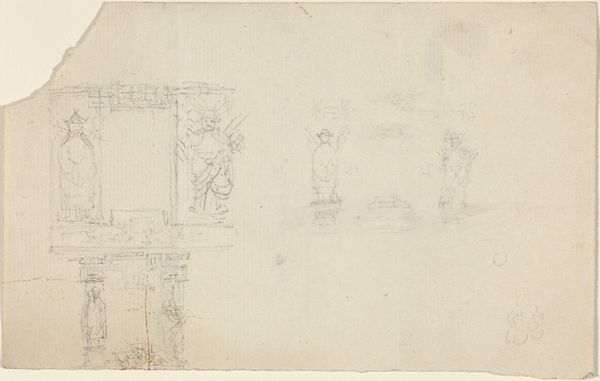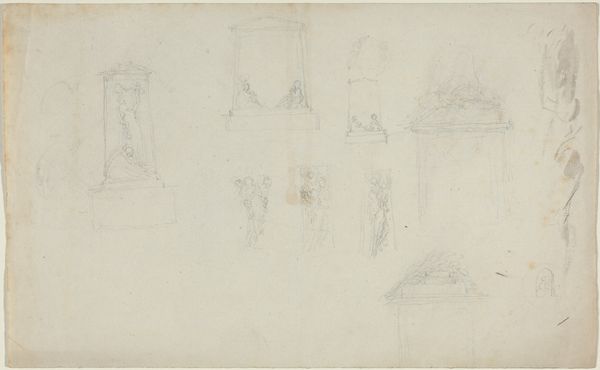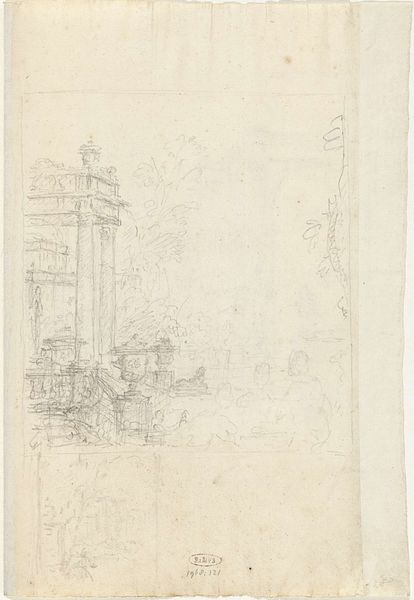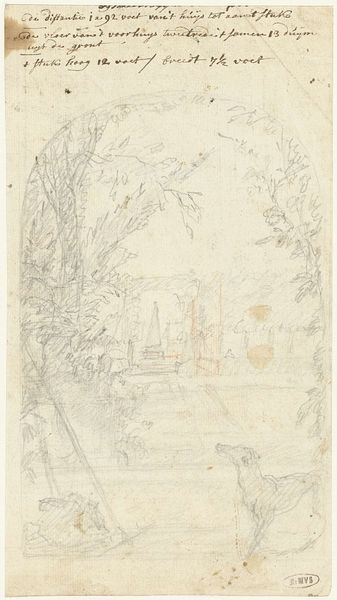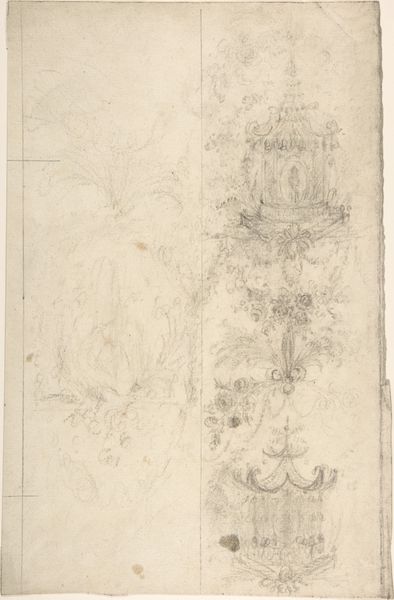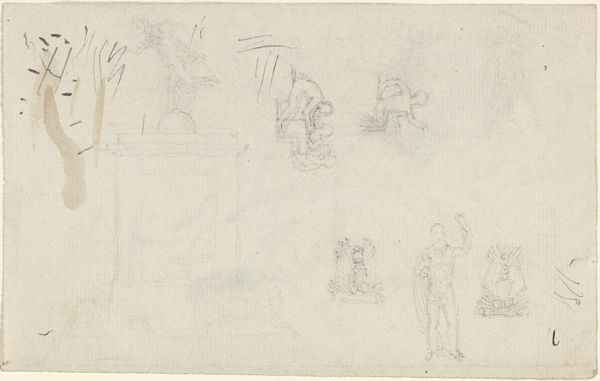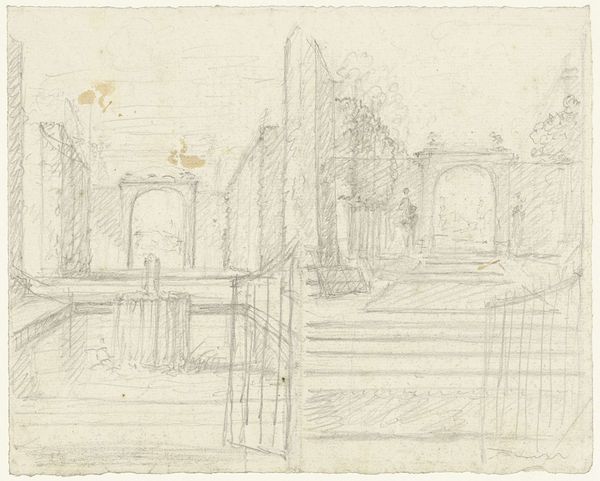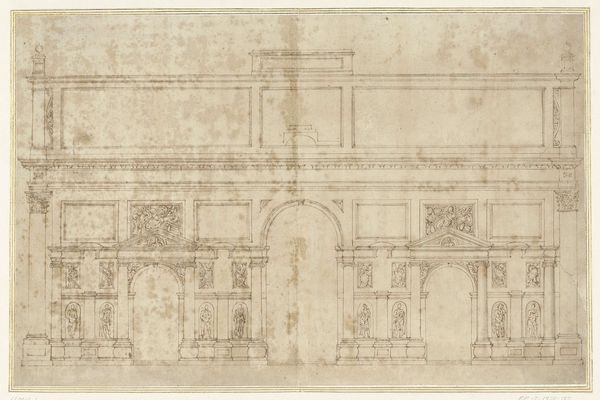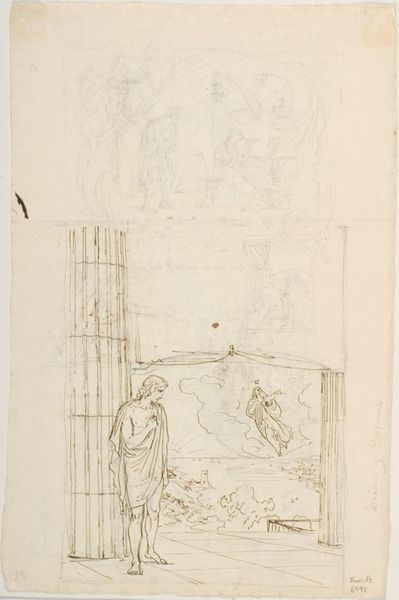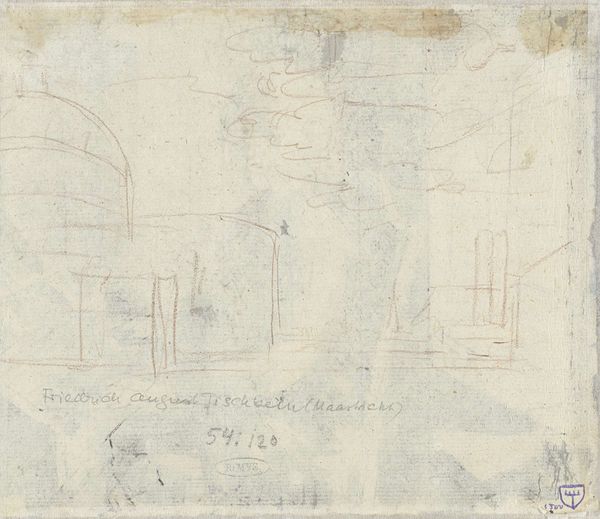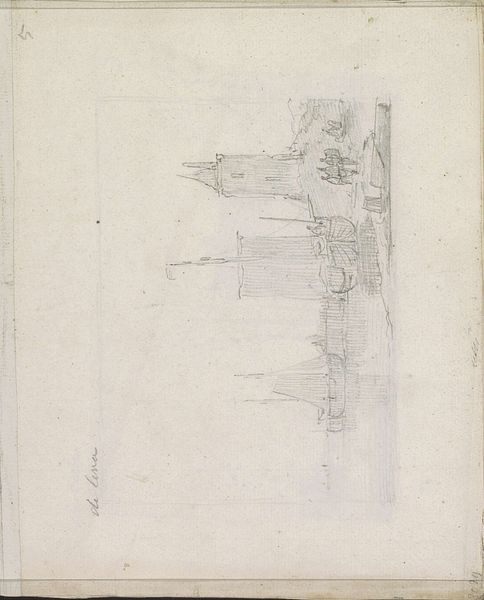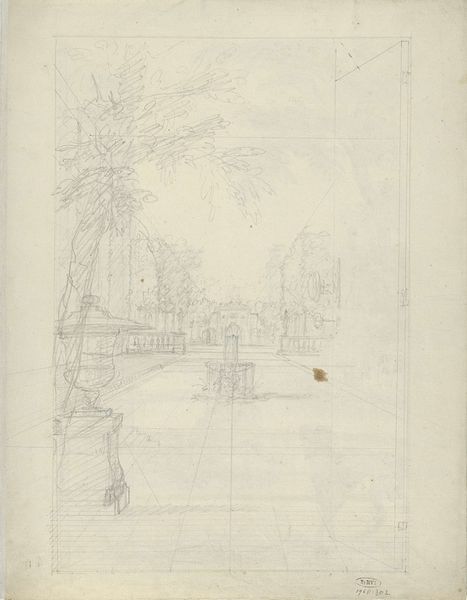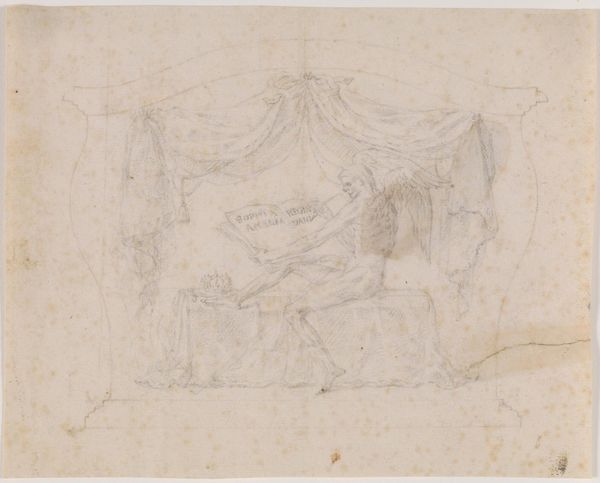
drawing, pencil
#
drawing
#
garden
#
aged paper
#
toned paper
#
light pencil work
#
quirky sketch
#
baroque
#
incomplete sketchy
#
landscape
#
form
#
personal sketchbook
#
sketchwork
#
geometric
#
pencil
#
line
#
sketchbook drawing
#
sketchbook art
#
initial sketch
Dimensions: height 205 mm, width 328 mm
Copyright: Rijks Museum: Open Domain
Curator: I'm struck by the delicacy of this drawing. It's titled "Drie schetsen van een tuin met ornamenten," or "Three Sketches of a Garden with Ornaments" in English. It's attributed to Dionys van Nijmegen, dating from between 1715 and 1798. Editor: It's wispy and faded. There is an unfinished quality that lends a dreamlike feeling, or perhaps a scene partially remembered. Curator: The historical context is fascinating. During this period, gardens were powerful symbols of status and control. The rigid geometry we see gestured at here mirrors the social hierarchies embedded in landscape design. Think of Versailles and its carefully orchestrated relationship to power. Editor: Are you suggesting the sketches speak to this tension? What about the gaze? Are we, the viewers, implicitly placed as land owners observing, critiquing? The role of gender might be at play if this was sketched for a matriarch? Curator: Absolutely, that’s part of it. Who gets to occupy and control these spaces becomes central. Land ownership and the aesthetics surrounding it are never neutral. Moreover, consider the labor involved in creating and maintaining these spaces - the exploitation woven into the very fabric of these gardens. Editor: You bring up critical considerations regarding landscape's relationship to the exploitation and maintenance of gardens. The gardens, as extensions of the elite, and even this very planning document speaks volumes. I initially thought the work evoked tranquility but with context I view it as another signifier of the problematic wealthy of the era. It no longer feels as serene. Curator: Precisely! This interplay between design, ownership, and labor forms a complex nexus of power. And seeing a sketch rather than a fully rendered painting adds to this feeling of underlying tension, exposing the bare bones of control. Editor: This makes me want to reflect on contemporary approaches to garden design. How might current artists and designers challenge these historical power dynamics through their work? Curator: Yes! This has encouraged me to reflect on the function and meaning imbued in even the most delicate artistic traces, and how even a simple pencil sketch can become a flashpoint for historical analysis.
Comments
No comments
Be the first to comment and join the conversation on the ultimate creative platform.
